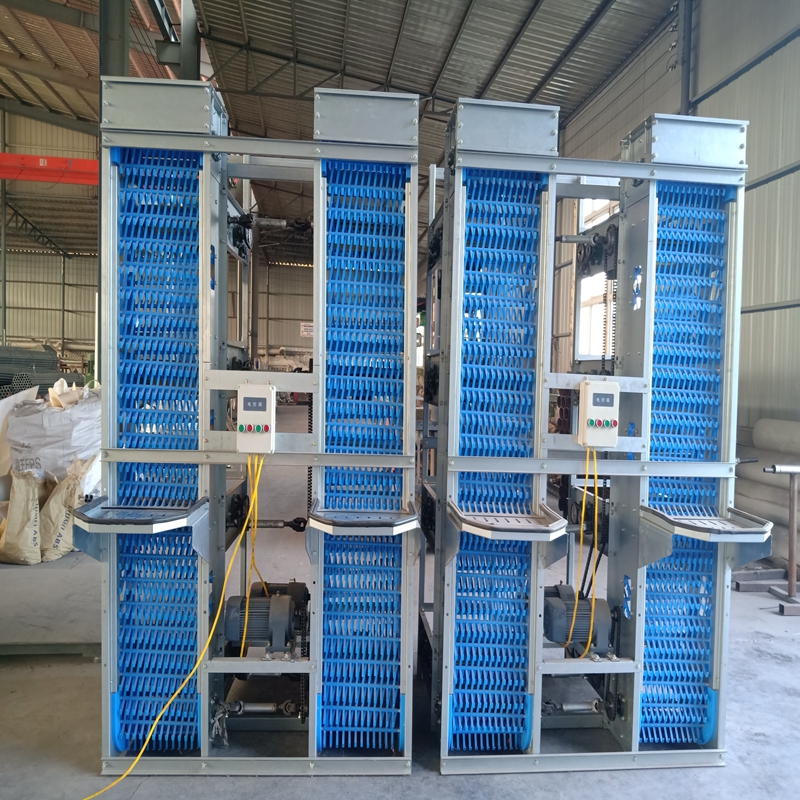Exploring the Benefits of Cellulose Evaporative Cooling Pads for Enhanced Indoor Climate Control
Jul . 27, 2024 16:37 Back to list
Exploring the Benefits of Cellulose Evaporative Cooling Pads for Enhanced Indoor Climate Control
Cellulose Evaporative Cooling Pads An Eco-Friendly Cooling Solution
In an era where climate change and rising temperatures are becoming increasingly pressing issues, the search for sustainable and energy-efficient cooling solutions is more pertinent than ever. One such solution that has garnered attention is the cellulose evaporative cooling pad. These pads, which leverage the natural process of evaporation, not only provide effective cooling but also contribute to environmental sustainability.
What are Cellulose Evaporative Cooling Pads?
Cellulose evaporative cooling pads are made from specially treated cellulose fibers, which are highly absorbent and provide an efficient surface for water evaporation. When warm air passes through these pads, the moisture on the pads evaporates, absorbing heat from the air and effectively lowering the temperature. This process can result in a substantial drop in air temperature, making it an excellent choice for both residential and industrial cooling needs.
Efficiency and Performance
The efficiency of cellulose evaporative cooling pads is one of their standout features. Research indicates that these pads can reduce temperatures by as much as 20-30°F, depending on ambient conditions. Their design allows for a larger surface area for water interaction, optimizing the evaporation process. Furthermore, cellulose pads can hold significant amounts of water, ensuring a steady cooling effect over time, even in warmer climates.
Moreover, these pads are not only effective but also energy-efficient. Traditional air conditioning systems consume substantial amounts of electricity, contributing to both higher utility bills and increased carbon emissions. In contrast, evaporative cooling systems utilizing cellulose pads operate with lower energy consumption, often requiring only a fan to circulate air. This makes them an enticing alternative for those looking to minimize their carbon footprint while keeping their environments comfortable.
cellulose evaporative cooling pad

Sustainability Factors
Another compelling reason to consider cellulose evaporative cooling pads is their eco-friendliness. Unlike synthetic cooling materials, cellulose pads are primarily composed of natural materials that are biodegradable, recyclable, and sourced from renewable resources. The production of cellulose pads also typically involves fewer harmful chemicals compared to conventional cooling systems, making them a healthier choice for both people and the planet.
Additionally, the water consumption of evaporative cooling systems is relatively low. While they do use water to facilitate cooling, this water is often recirculated, minimizing wastage. Adopting such systems can lead to reduced reliance on conventional cooling methods, thereby conserving energy and water resources.
Applications and Versatility
Cellulose evaporative cooling pads are incredibly versatile and can be used in various settings. They are commonly found in residential cooling systems, such as swamp coolers and HVAC systems, but they also have applications in commercial spaces like warehouses, greenhouses, and factories. Their ability to cool large areas makes them suitable for agricultural practices, enhancing crop yields by providing a conducive growing environment.
Conclusion
As the demand for sustainable cooling solutions grows, cellulose evaporative cooling pads emerge as a front-runner owing to their efficiency, performance, and eco-friendliness. They represent a shift towards more sustainable practices in temperature regulation, allowing us to combat rising temperatures while being responsible stewards of the environment. By choosing cellulose evaporative cooling pads, individuals and businesses alike can contribute to a greener future, all while enjoying the comfort of effective cooling. In light of these attributes, it is clear that cellulose cooling technology is not just a trend but a vital component in the quest for sustainable living.
-
Hot Sale 24 & 18 Door Rabbit Cages - Premium Breeding Solutions
NewsJul.25,2025
-
Automatic Feeding Line System Pan Feeder Nipple Drinker - Anping County Yize Metal Products Co., Ltd.
NewsJul.21,2025
-
Automatic Feeding Line System Pan Feeder Nipple Drinker - Anping County Yize Metal Products Co., Ltd.
NewsJul.21,2025
-
Automatic Feeding Line System - Anping Yize | Precision & Nipple
NewsJul.21,2025
-
Automatic Feeding Line System - Anping Yize | Precision & Nipple
NewsJul.21,2025
-
Automatic Feeding Line System-Anping County Yize Metal Products Co., Ltd.|Efficient Feed Distribution&Customized Animal Farming Solutions
NewsJul.21,2025






